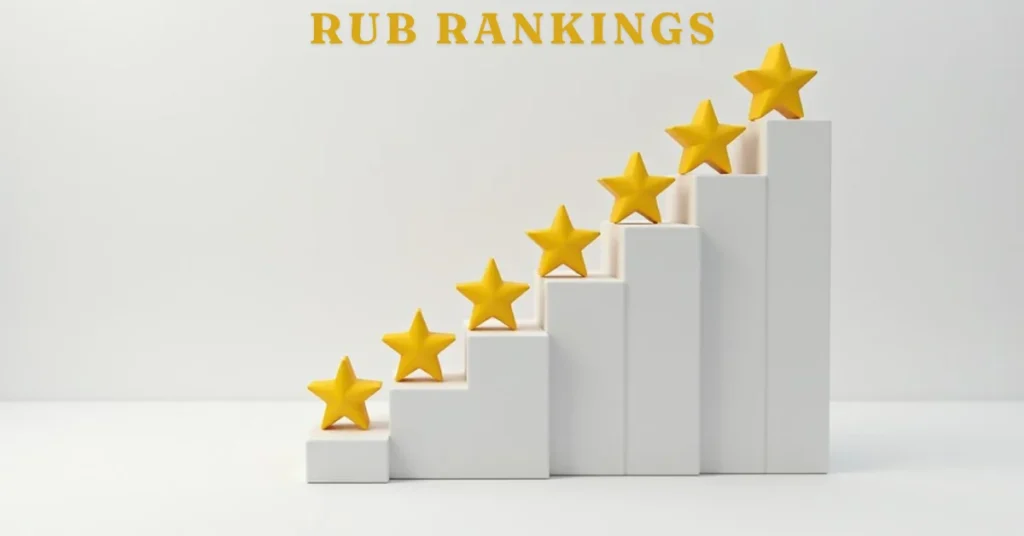In the fast-evolving world of digital content, metrics and ranking systems help users navigate quality and relevance. One such emerging metric is Rub Ranking—a term gaining traction in areas like AI-generated content, peer-reviewed knowledge platforms, and quality control systems. But what exactly is Rub Ranking? How does it work? And why should you care?
What Is Rub Ranking?
Rub Ranking is a quality scoring system designed to evaluate and rank the value or reliability of content, contributions, or actions within a specific context. The word “rub” often refers to a friction point or a measure of tension—symbolically fitting for a system that discriminates between high and low-value contributions.
While not a mainstream term in all industries yet, Rub Ranking is increasingly used in specialized platforms, particularly those involving AI, crowdsourced input, or collaborative knowledge systems. In many cases, it’s used internally to refine content, train algorithms, or filter user input for quality.
How Rub Ranking Works
Though the mechanics may vary depending on the platform, Rub Ranking typically functions on these core principles:
1. Criteria-Based Scoring
Rub Rankings are generated based on predefined criteria—such as accuracy, relevance, originality, clarity, or engagement. Each piece of content or action is evaluated against these benchmarks, often using a combination of human judgment and algorithmic analysis.
2. Weighted Metrics
Not all criteria are equal. For instance, accuracy may be weighted more heavily than originality in a scientific context, whereas creativity might be more important in an artistic or literary setting. These weights influence the final Rub score.
3. Dynamic Feedback Loops
In some systems, Rub Rankings are updated dynamically based on ongoing feedback from users, editors, or automated checks. This allows the system to adapt over time and continuously refine its evaluations.
4. Transparent vs. Hidden Scores
Depending on the application, Rub scores may be visible to users (to help them assess credibility) or kept behind the scenes (to inform internal ranking algorithms). For example, AI platforms might use Rub Rankings to determine which training examples to prioritize.
Why Rub Ranking Matters
1. Quality Assurance
In an era where content is generated and shared at lightning speed, Rub Ranking offers a mechanism to maintain standards. Whether it’s articles, AI outputs, or forum posts, ranking content by quality ensures only the best rises to the top.
2. Trust Building
For platforms dealing with crowdsourced input or AI-generated material, Rub Ranking helps users build trust. A high Rub score becomes a proxy for credibility—especially useful in education, healthcare, or news domains.
3. Efficient Curation
Rub Ranking streamlines content moderation and curation. Editors or algorithms can use these scores to sort, prioritize, or flag content for review, reducing the time and cost associated with manual quality checks.
4. User Incentivization
Gamified platforms or collaborative knowledge bases can use Rub Rankings as a form of reward, recognizing and promoting top contributors. This creates positive feedback loops that encourage quality over quantity.
Real-World Applications
-
AI Training Datasets: Companies training large language models use Rub Rankings to assess which human-labeled examples are most accurate or useful.
-
Online Communities: Forums or knowledge-sharing platforms like Stack Overflow or Reddit could employ Rub Rankings to rank answers or posts.
-
Educational Technology: Learning apps may use Rub-based scoring to evaluate student responses based on clarity, reasoning, and completeness.
Final Thoughts
As digital ecosystems become more complex and user-generated or AI-generated content floods our screens, systems like Rub Ranking will play a pivotal role in managing quality and trust. Whether visible to end users or functioning behind the curtain, Rub Ranking represents a smarter, more nuanced way to measure value—and in a data-saturated world, that’s not just useful; it’s essential.

